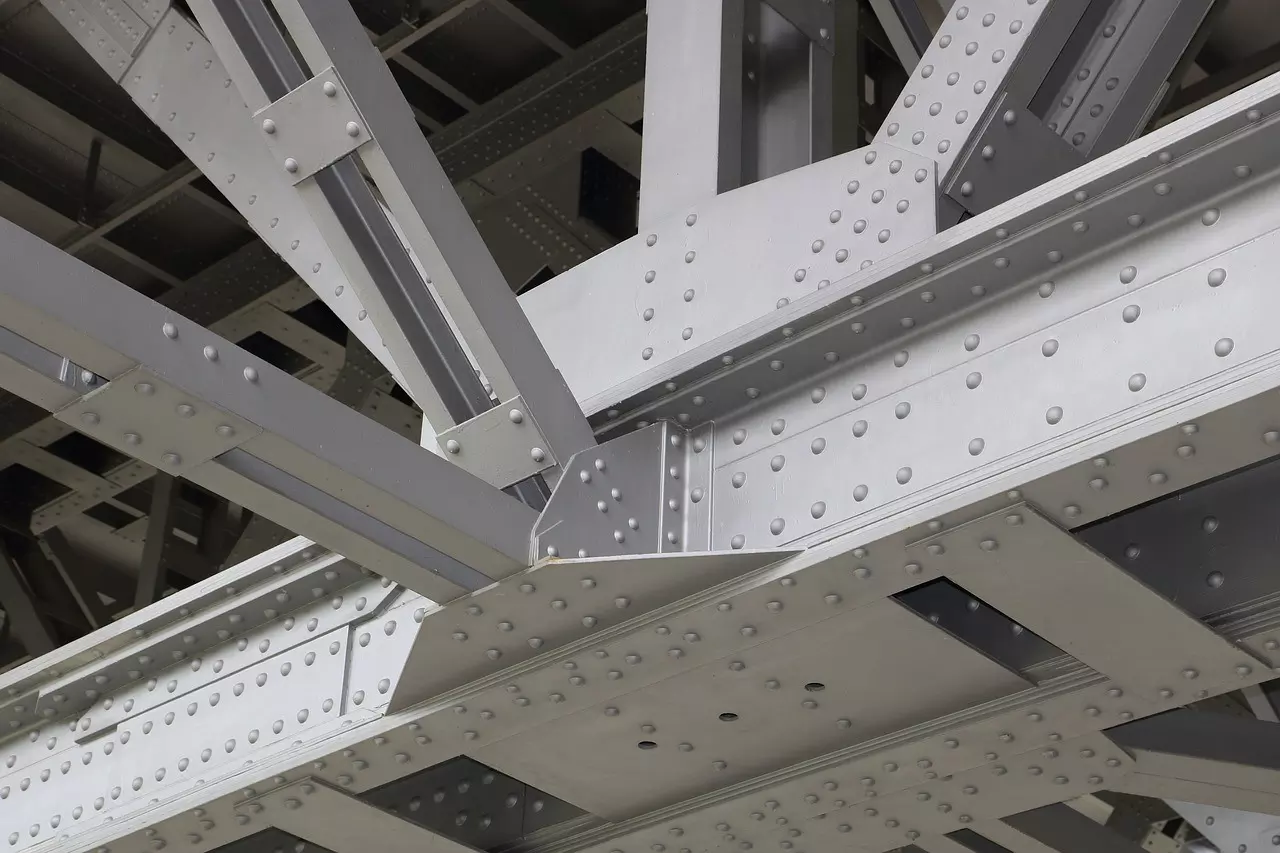What is the embodied carbon of steel? Find out more about the co2 content of structural steel and assessing embodied carbon.
Embodied Carbon in Steel
Even before a building starts drawing power, a gigantic carbon footprint has already been established in manufacturing the construction materials.
With climate change being an imminent emergency, construction professionals are already looking to improve their energy efficiency and renewable energy production to limit their effects on the environment.
Reducing the carbon produced during the construction process and when the building is finished, and the lights go on requires us to plan ahead through thoughtful design guidance is the best way to move forward.
A large part of this is the effort to reduce embodied carbon, the greenhouse gasses and harmful carbon produced during the construction process, a major contributing factor being "embodied carbon".
According to the United Nations Environment Programme, current embodied carbon data suggests that embodied carbon released during building material manufacture accounts for 11% of global greenhouse gasses.
While that might not sound like a large proportion, thinking in global terms, you can imagine how significant this contribution to climate change truly is.
Even when you compare this 11% contribution to the larger 28% of global greenhouse gasses emitted when producing operational energy (operational carbon), embodied carbon is just as much of a problem, requiring similar energy efficiency and renewable source solutions.
This is a serious issue given the targets set in the 2015 Paris Climate Accord. World leaders agreed to limit greenhouse gas production to safe levels by the year 2050.
To meet these necessary targets, we need to tackle the most significant contributors to climate change, including those in the construction industry.
The Carbon Dioxide content of structural steel
The ISO 14040 environmental standards for structural steel production established the "system expansion" method for life cycle assessments, approved by the World Steel Association.
This structural system is used to calculate the environmental impact of steel manufacturing to see how much carbon or greenhouse gasses are released during the production process.
With this approach to steel production, all of the new material produced anywhere in the world is considered part of the entire global system of steel supply.
Credits are also appointed for co-products used during the manufacturing process, which reduce harmful carbon emissions. These co-products include things such as process gasses, which are typically used to generate electricity.
Figures for these measurements are expressed on a per tonne bases.
Given the weight of the new materials being produced, these figures might look like steel has a higher environmental impact than other construction materials, such as concrete.
Steel has a much higher strength-to-weight ratio than other materials, so one tonne of steel can go farther than a tonne of something else.
Since steel can perform more structural duties than other materials, the CO2 emissions produced when building with steel are generally lower.

There are various other values generated for the carbon content of steel during its production.
Some of these values are calculated using less stringent methods than the system expansion method. These values are gathered through the "cradle-to-gate" analysis, therefore discounting the effect of recycled steel on its environmental impact.
This impact only reveals itself after a full end of life cycle is analysed.
These inferior values are used when comparing steel production to other structural materials. The industries that produce other materials often cannot generate cradle-to-grave data as stringently as the steel industry, which explains these values' inferiority.
It would be useless, in most cases, to compare the data derived from steel production to other construction materials if they cannot generate data with the same accuracy.
Assessing Embodied Carbon
It is one thing to determine the embodied carbon within a quantity of steel used in property construction, but what are we supposed to do with it once we have that information?
The first thing is to work out where the carbon "hot spots" are. These are the key materials or systems undertaken during the construction process that contribute the most to the carbon footprint of a building.
Once we know where the carbon hot spots are, project managers can better decide what materials and processes are used during construction. These solutions can help us make a bigger impact in reducing our greenhouse gas emissions.
Again, when discerning the embodied carbon in a building's materials, the life cycle assessment (or WBLCA) is used, alongside others.
What is Life Cycle Assessment?
The Life Cycle Assessment (LCA) was first devised in the 1960s and has been used ever since to measure the environmental impact of products and services. While it is a straightforward assessment system, its implications can be fairly complex.
There are often crucial assumptions that need to be made as part of the assessment, which are specific to certain materials, potentially influencing the outcome in one way or another.
LCAs, alongside Product Category Rules (PCRs), can be used to create Environmental Product Declarations (EPD). These declarations are becoming increasingly common in the UK and the EU.
This is because they offer detailed and accurate environmental data for manufacturers' products. There are currently over 6,000 EPD verified construction products around the globe, and this number is only growing.
Life Cycle Assessments can calculate the environmental impact of the entire life cycle of a product.
Those conducting the assessment must collect quantitive data for the inputs and outputs, energy used, and waste flows of the materials and processes used to create a product. Depending on the product, it can be a large undertaking, but it reveals useful environmental insights.
There are three main steps in an LCA:
Step One:
Gather information on relevant energy and material inputs of a system, as well as environmental releases or outputs, such as emissions, air, water or solid waste.
Step Two:
With this information gathered, evaluate the environmental impacts of the inputs and outputs of your processes, such as the global warming potential from CO2 gas emissions.
Step Three:
Once you have this information and have assessed its impacts can start to make better decisions regarding the environmental implications of your production systems.
UK average embodied carbon of structural steel.
With the above embodied carbon assessments in mind, it is understandable that more and more manufacturers and those in the construction industry, such as structural engineers, architects and project managers, are beginning to pay closer attention to the greenhouse gas emissions emitted from the processes they oversee. Again, one of the biggest environmental impacts in the construction industry is embodied carbon.

For example, of the environmental impact of constructing a multi-storey structure, around 60% of this will be down to the materials used to construct the property and the embodied carbon within it.
Therefore it is understandable that those in the construction industry are paying more attention to the embodied carbon of the structures they build and how they can monitor this and learn to reduce it for a sustainable future.
Several organisational bodies have established structure-specific targets for embodied carbon targets for buildings, including RIBA, LETI and IStructE.
While these targets are only voluntary for those in the construction industry, growing calls to regulate embodied carbon through building regulations better are putting greater pressure on all those involved.
Again, most manufacturers of structural products, such as construction steel, will provide environmental information on their products through Environmental Product Declarations (EPDs). However, these will be producer-specific declarations, not accounting for emissions data during the application of their products.
If you are working on a project where the steel manufacturer is unknown, it can be tricky to find out the structural steelwork's embodied carbon footprint value.
However, given that most steel sections, such as moment frames or braced frames, are a globally traded commodity, there is at least some level of standardisation to work from.
Given strict manufacturing regulations, this average is easier to work out for steel produced in the UK using basic oxygen furnaces or electric arc furnaces. On average, the embodied carbon footprint, or average emissions factor, for one tonne of steel is around 1.7 tonnes of CO2 per one tonne of steel (tCO2e/t).
Are you looking for RSJ steel beam suppliers in London, Kent, Essex and the surrounding areas? Follow the link below to discuss your project.

